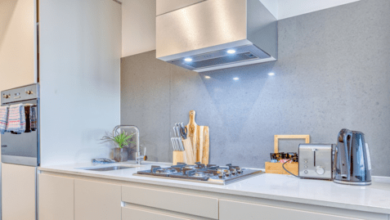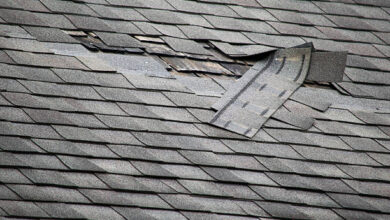How To Fix Your Furnace In An Emergency – Complete Guide
When your furnace stops working properly, you may experience some of the difficulties. Your furnace is malfunctioning and needs immediate attention. Therefore, you should not delay and call a professional furnace repair service as soon as possible.
However, sometimes you may not be able to reach a furnace repair service right away, or you may have to wait for a while before they arrive. In such cases, you may wonder if there is anything you can do to fix your furnace in an emergency.
How to Repair Your Furnace in an Emergency Situation?
There are some simple steps you can take to troubleshoot and repair your furnace yourself, at least temporarily, until a furnace repair expert can assist you.
1. Check the Thermostat
The first thing you should do when your furnace is not working is to check the thermostat. Sometimes, the problem may be as simple as a dead battery, a loose wire, or an incorrect setting. To check the thermostat, you should:
- Make sure it is turned on and set to heat mode
- Replace the batteries if they are low or dead
iii. Check the wires and connections for any damage or looseness
- Adjust the temperature setting to a few degrees higher than the room temperature
- Wait for a few minutes and see if the furnace responds
If the thermostat works fine, you can move on to the next step. If not, you may need to replace or repair the thermostat.
2. Check the Power Supply
The next thing you should do is to check the power supply to the furnace. Sometimes, the furnace may not work because of a power outage, a blown fuse, or a tripped circuit breaker. To check the power supply, you should:
- Make sure there is no power outage in your area
- Locate the fuse box or the circuit breaker panel and look for the switch or the fuse that controls the furnace
- If the switch is off or the fuse is blown, turn it on or replace it with a new one
- Wait for a few minutes and see if the furnace starts working
If the power supply is fine, you can proceed to the next step. If not, you may need to call an electrician or a professional furnace repair.
3. Check the Fuel Supply
Then check the fuel supply to the furnace. Sometimes, the furnace may not work because of a low or empty fuel tank, a closed or clogged valve, or a faulty fuel pump. To check the fuel supply, you should:
- Make sure you have enough fuel in the tank
- Locate the valve that controls the fuel flow to the furnace and make sure it is open
- Check the fuel filter and the fuel line for any blockage or leakage
- Check the fuel pump and the burner for any damage or malfunction
- If you have a gas furnace, check the pilot light and make sure it is lit
If the fuel supply is fine, you should check something else which is not working. If not, you may need to refill the tank, open the valve, clean or replace the filter or the line, repair or replace the pump or the burner, or relight the pilot light.
4. Check the Air Filter
The fourth thing you should do is look into the furnace’s air filter. The furnace can stop working when the air filter is dirty or clogged, which restricts the airflow and causes the furnace to overheat or shut down. To check the air filter, you should
- Locate the air filter and remove it from the furnace
- Examine the filter for any dust, dirt, or debris
- If the filter is dirty or clogged, clean it with a soft brush or a vacuum cleaner, or replace it with a new one
- Reinstall the filter and make sure it fits properly
You may need to clean or replace the filter more often.
5. Check the Vents and Ducts
You should inspect the vents and ducts of the furnace. Sometimes, a faulty or blocked vent or duct that stops the warm air from reaching the rooms or allows the cold air to get into the furnace. You should:
- Inspect the vents and ducts for any obstruction or damage
- Remove any objects or debris that may be blocking the vents or ducts
- Seal any cracks or holes that may be leaking the air
- Adjust the dampers or the registers to control the airflow to the rooms
If there’s a fault in the vents and ducts you may need to clear the blockage, repair the damage, or replace the vents or ducts.
6. Call a furnace repair Service
The last thing you should do if you can’t inspect any of the above is to call for emergency furnace repair service. There should be a complex or serious problem that requires professional expertise and equipment. Some of the common problems that need a furnace repair service are:
- Faulty ignition or control system
- Cracked or corroded heat exchanger
- Damaged or worn-out blower motor or fan
- Malfunctioning or leaking safety valve or pressure switch
- Improper or inadequate ventilation or combustion
If you encounter any of these problems, you should not attempt to fix them yourself, as you may cause more damage or injury. Instead, you should turn off the furnace and call a furnace repair service as soon as possible.
According to a report, furnaces in Canada typically have a lifespan ranging from 15 to 20 years. Upgrading to a new high-efficiency model can save up to 40% on heating costs. Replacing an old furnace can also reduce the risk of breakdowns, malfunctions, and emergencies.
Conclusion
A furnace emergency can be a stressful and uncomfortable situation, but it does not have to be a hopeless one. By following the steps above, you can fix your furnace in an emergency and restore the heating and comfort to your home.
If you are looking for a reliable and affordable furnace repair service in Edmonton, you should choose us. We are a licensed and insured company that offers high-quality Emergency furnace repair services for all types of furnaces.
FAQs
- Can power outages affect my furnace, and how can I address this in an emergency?
Yes, power outages can impact your furnace. Check the circuit breaker and reset it if necessary. If the power outage persists, consider using alternative heating sources temporarily and contact a professional for assistance.
- What should I do if my furnace is producing an unusual smell during an emergency?
Turn off the furnace immediately if you detect any strange odors, especially if they resemble gas or burning. Evacuate the area and contact emergency services. Do not attempt to restart the furnace until it has been inspected by a professional.
- Are there common issues with pilot lights in furnaces during emergencies?
Yes, a malfunctioning pilot light can cause heating issues. You can attempt to relight it following the manufacturer’s instructions. If it continues to go out or if you encounter difficulties, it’s recommended to seek professional assistance promptly.
- Can I use space heaters or other heating devices as a temporary solution during a furnace emergency?
While space heaters can provide temporary heat, they are not a long-term solution. Ensure they are used safely and avoid overloading circuits. It’s crucial to address the underlying furnace issue promptly with the help of a professional.
- Are there emergency measures I can take to prevent frozen pipes connected to my furnace?
To prevent frozen pipes, maintain a consistent temperature in your home, insulate exposed pipes, and allow faucets to drip during extremely cold weather. If you suspect frozen pipes, contact a plumber promptly to avoid potential damage.
- Can regular DIY maintenance help prevent furnace emergencies, and what tasks should I perform?
Yes, regular DIY maintenance can help prevent emergencies. Tasks include replacing air filters, cleaning vents, and visually inspecting the furnace for any signs of wear or damage. However, professional annual inspections are still essential for comprehensive maintenance.


